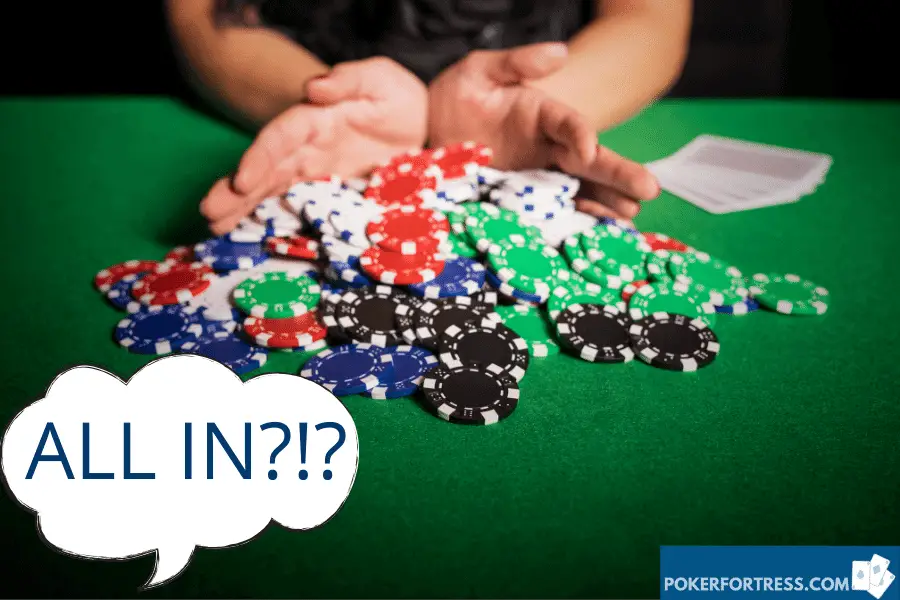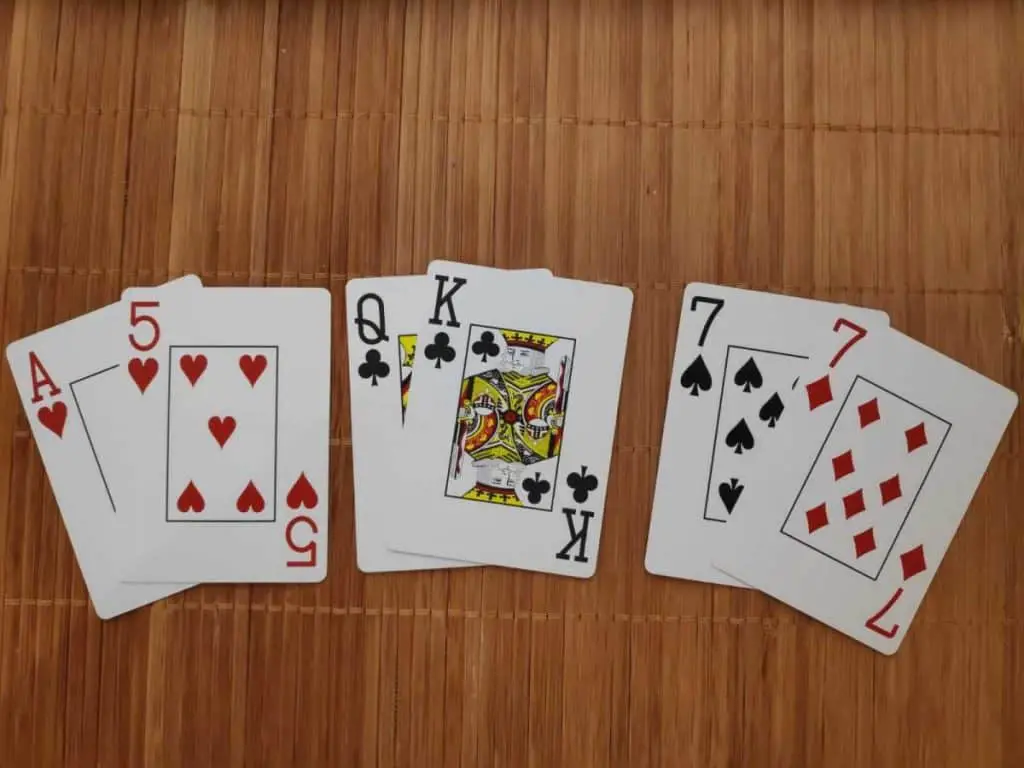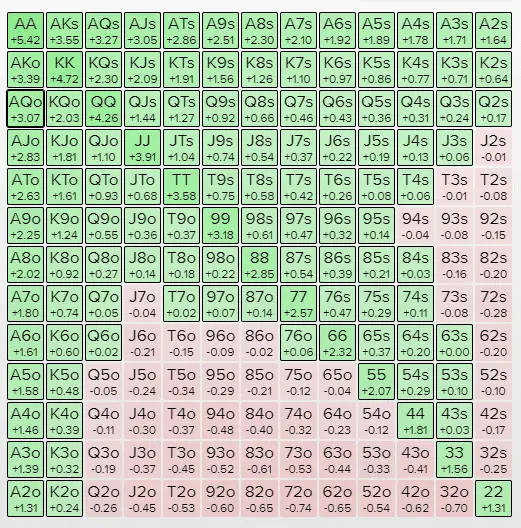If you are new to poker and didn’t get the full grasp of poker rules yet, then I will let you know of one of the significant differences in Texas Holdem No-Limit poker games compared to Limit Holdem. In Limit games, you can’t go allin preflop.
But can you go allin preflop in no-limit games? Yes, you can go all-in preflop in No-Limit Holdem games, but whether this decision is correct or burning your money depends on several factors.

To know when and why to go all-in before the flop is considered one of the essential poker skills. It’s one of the crucial elements of no-limit Holdem gameplay. Term No-limit means that you can put all your chips at risk at any time during the hand either before the flop, where we didn’t even see the community cards yet. In this article, we will discuss key factors when deciding on moving all-in preflop.
Calling all-ins vs. going all-in.
In No-Limit Holdem, we can put all our chips preflop into the pot in two ways. We can call our opponent all-in, or we can put our opponent all-in ourselves. The most significant difference is that when we put our opponent all-in, he will sometimes fold, allowing us to win the pot without a showdown.
This is especially important in final table spots where we gain significant EV* by forcing our opponent to fold. In general, we need a stronger hand for calling all-in then going all-in. Why? Our opponent has already committed his chips and is now on us to call if we have a strong enough hand.
*EV is short for expected value, which means how much we are supposed to win in the long run.
Key factors when making a decision about going all-in preflop.
Our hand strength
The most important “factor” when deciding about going all-in is our hand strength. We should ask ourselves: which hands can “stand the heat”. Those are usually top tear hands such as TT+ and AQs+ (or even tighter at full-ring games and tight live games, where opponents don’t 3bet a lot).
These hands are strong enough to beat most of our opponent’s hands, but can also deliver occasional suckout when we are behind. In table 1 you can see how our strong hands fare versus various hand ranges. The weaker our opponent’s range is, the higher EV we gain
| Hero’s Hand and hero’s equity below | ||
| Villains | TT+,AQs+,AKo | |
| Nitty Joe | 99+,AJs+,KQs,AQo+ | 56.29% |
| Taggy Mary | 77+,ATs+,KQs,AJo+ | 60.04% |
| Loosy Billy | 66+,A9s+,KJs+,ATo+,KQo | 63.03% |
| Whaley Stevie | 44+,A7s+,KTs+,QTs+,JTs,ATo+,KQo | 64.29% |
Our stack size
A good thing to consider when we play a pot with a villain is how deep we are. We should always base our strategy not just on our stack but also on the stack of our opponent.
The shorter that our stacks are, the wider we can put our chips in.
In tournaments, you will find yourself going all-in much more often since the blinds constantly increase, forcing us to play more hands. Going all-in is basically “name of the game” in poker tournaments and sit and goes especially in turbo and hyper-turbo varieties.
Mastering short-stack play is essential to become a winner in tournaments.
There are many tools such as Icmizer and Holdemresources where you can calculate with which hands you can go all-in before the flop profitably. For those spots, it comes down to memory, if you practiced them enough, then you will make the right decision every time.
Our opponent
Knowing your enemy is one of the oldest sayings in the art of warfare, which also happens to apply when we are battling our opponents in poker streets.
Our allin hand requirements mostly depend on our opponent’s playing style.
Is he loose as a goose or tight as a drum or perhaps somewhere in between?
It’s our job as poker players to assess villains playing style and adjust accordingly. In table 2 is demonstrated how we should adapt our range vs. different types of villains. Obviously, we want to win, not just break even when we play poker, so these ranges are adjusted, so our hero gains 5% of EV. In the game, we also have to consider pot odds when debating calling all-ins, but that’s a topic for another day.
| Villains | Hero (+5% Equity) | ||
| Nitty Joe | 99+,AJs+,KQs,AQo+ | TT+,AQs+,AKo | |
| Taggy Mary | 77+,ATs+,KQs,AJo+ | 99+,AJs+,AQo+ | |
| Losy Billy | 66+,A9s+,KJs+,ATo+,KQo | 77+,ATs+,AJo+ | |
| Whaley Stevie | 44+,A7s+,KTs+,QTs+,JTs,ATo+,KQo | 66+,A9s+,KQs,AJo+ |
Bluffing all-in preflop

But do we really always need a super-strong hand to push allin preflop? As a good rule of thumb, we should always try to find some bluffs when playing poker, so we keep our opponents guessing.
The hands that we pick as a preflop bluff are hands that still have decent equity when called, such as A5s, KQs, 66-77.
It doesn’t mean that we always bluff with these hands, occasional “curveball” will do the trick.
Cash games vs. tournaments
Cash games are usually played much deeper than MTTs, which automatically means that there will be fewer all-ins going on before the flop. In cash games, you typically play a constant stack of 100 BB while in tournaments, your stack varies depending on a tournament level.
Since eliminating all other players is the goal of the tournament, we must play a lot of allin pots to do so. The nature of tournament play forces players to play a lot of all-in pots because the blinds move up so rapidly. If we don’t play aggressively enough, we will be slowly blinded out, which is the worst way to go out of the tournaments.
Basically, in cash games, you can “chill” a little bit and wait for hands while in MTTs, you are forced to play a lot less premium hands.
Push/fold in tournaments
In tournaments, you’ll find yourself a lot with sub 20 BB stack. Which means that it is push or fold time. That means that if you play a hand, you will commit all of your chips by going all-in or fold. Let us look at a simple example of that. In our scenario, everybody folds to us on the SB where we sit with 15 BB. With a push/fold poker tool, we can calculate which hands we can profitably play.
As you can see in the picture below, we can profitably push around 60% of the hands. The + number below the hand tells us how many big blinds we gain by showing all in. I know that looks wide, but you have to consider that we have to come through only one opponent.
You have to remember that most of the profits from our push/fold strategy come from our opponent folding, allowing us to win pot preflop without a showdown. So next time push that 75s SB vs. BB with 15bb because it’s profitable and if somebody calls you a donkey for it just ignore him. The professionals are doing it to you all the time.

Conclusion
As you can see, the simple answer is Yes, we can go all-in before the flop, but what makes an excellent poker player is to recognize which spots to take and which to pass. These skills are not intuitive but must be gained by study and experience. So next time when you play an all-in poker hand, and you are unsure what to do, go ahead and mark it. After the session, you can analyze it with a poker tool or a poker buddy. It’s fun, and it keeps you from making the same mistake over and over again.



